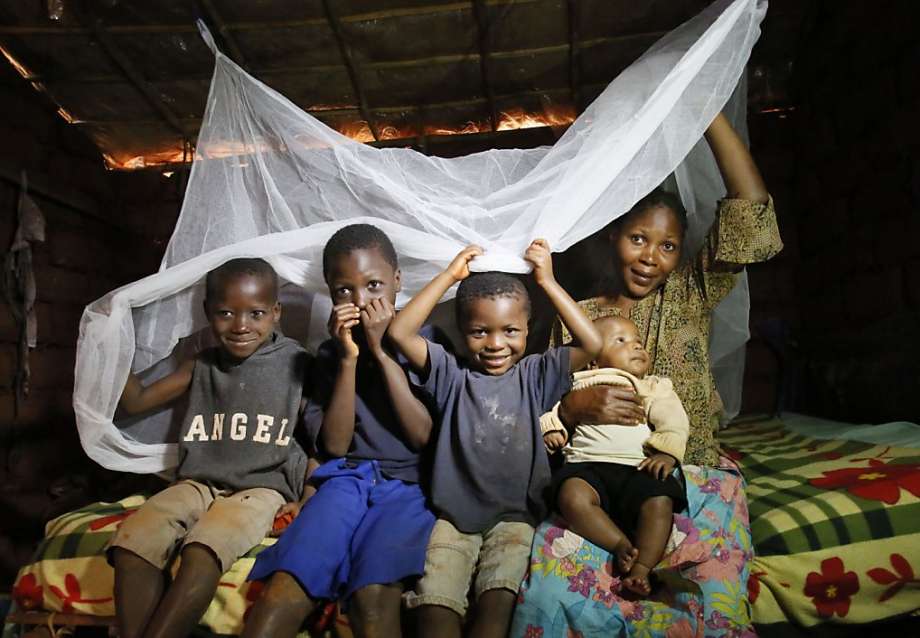News & Updates
World Malaria Report 2017: The Fight Against Malaria Has Stalled
02 January 2018

Every two minutes malaria kills a child under five. Resulting from a single mosquito bite, malaria is a deadly, yet preventable and treatable disease. With several malaria prevention tools and treatments available, the global fight against malaria continues.
The World Malaria Report 2017, published by World Health Organization (WHO), reveals that progress in global malaria control and elimination has stalled.
The report comprehensively evaluates the global progress, considering investments and funding in malaria programmes, prevention, diagnosis and treatment of the disease, and challenges preventing its elimination. Through an analysis of data from 2016, WHO provides an update on trends in the malaria disease burden, both, globally and regionally.
Whilst 211 million cases of malaria arose in 2015, 2016 saw an increase of approximately 5 million to reach 216 million cases. In the same year, 445 000 deaths were caused by malaria, similar to 2015. 91% of all malaria deaths in 2016 occurred within the WHO African Region, followed by 6% in the South-East Asia Region.
Africa endures approximately 90% of all malaria cases and deaths worldwide. 80% of the global malaria burden is carried by merely fifteen countries, of which fourteen are within sub-Saharan Africa (see Figure 1).
Figure 1: Proportion of estimated malaria deaths attributable to the fifteen countries carrying nearly 80% of malaria deaths globally in 2017. Source: World Malaria Report 2017

Long-lasting, insecticidal bed nets (LLINs) are a simple and cost-effective malaria-prevention tool. Insecticide woven into the nets greatly prevents the transmission of the disease from one person to the other.

The WHO African Region additionally saw a decrease in the protection of 35 million people at risk in 2016 from indoor residual spraying (IRS), a prevention method that entails spraying the inside walls of dwellings with insecticides. The report suggests this reduction in IRS coverage is potentially attributable to reduced reliance on insecticides and the switch to more expensive chemicals to manage insecticide resistance.
Approximately US$ 2.7 billion was globally invested in malaria control and elimination by governments and international partners in 2016. 74% of this investment occurred within the WHO African Region and 7% in the South-East Asia Region. However, annual funding must increase to US$ 6.5 billion per year by 2020 in order to reach the targets of the WHO global malaria strategy.
A lack of sustainable and predictable international and domestic funding was one of the various challenges identified by the report against the elimination of malaria. Emerging parasite resistance to antimalarial medicines and mosquito resistance to insecticides are other major threats to the fight against this disease.
Read more about these challenges to gain a thorough understanding of the global battle in the 2017 World Malaria Report here.
To learn more about the measures being undertaken for effective malaria control across the African region and recent investments in malaria programmes and research, join the Aid & International Development Forum (AIDF)’s 3rd annual Aid & Development Africa Summit on the 27-28th February 2018 in Nairobi, Kenya.
Discover innovative solutions aimed at preventing malaria and advancing diagnostic testing and treatment through several insightful speakers, including Karin Kallander, Senior Research Advisor at Malaria Consortium, Amit Thakker, Chair of Kenya Healthcare Foundation, Michela Martini, Regional Migration Health Specialist for Horn, East and Southern Africa, International Organisation For Migration (IOM), Adeiza Ben Adinoyi, Head of the Africa Health and Care Unit at IFR C, Githinji Gitahi, CEO of Amref Health Africa, Charles Gerhardt, International Project Manager at the Regional Centre of Excellence for Vaccine, Immunisation and Health Supply Chain Management and many more!
View the Summit agenda at http://africa.aidforum.org/agenda for more topics and speakers.
Register your participation in the AIDF Africa Summit at http://africa.aidforum.org/register
If you’d like to stay informed on the latest updates in aid and development, please sign up to the AIDF newsletter
Image Source: UN Foundation - Nothing But Nets